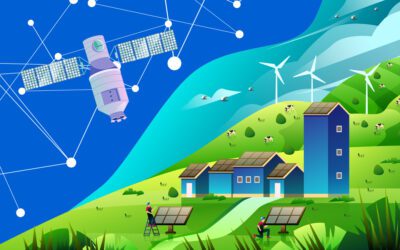Facing crises as opportunities for growth are the challenges of our era.
If we were to seek the meaning of the word “crisis” we would see something different from the negative concept it has assumed today. The word derives from the Greek “krisis“, which means choice, decision. In the past, it was used to refer to crucial moments in life. Over time, the meaning has expanded, encompassing decisive situations in various fields such as politics, economics, or society. Today, we view a crisis as something to be shunned, as negative, or linked to the fear of entering something new because it takes us out of our comfort zone. If we had the opportunity to see with different eyes, a crisis is nothing but an opportunity to bring forth hidden potentials, not just of an individual but of an entire society.
Why start with this premise to talk about the energy transition?
Because it’s important to observe that everything has been in front of us all along, but we didn’t have the eyes to see.
Let’s take a brief overview of energies
Humanity began using fossil fuels like coal, oil, and natural gas for industrial and energy purposes since the Industrial Revolution. The use of these materials extracted and transformed by humans happened relatively recently, only a few centuries ago. However, it grew rapidly, and one could even say “violently,” resulting in progressive global well-being, societal improvement, and individual lives’ enhancement.
Today, the focus is on environmental impact, climate, and achieving sustainability goals within a few decades. The entire model used until now is being revaluated, integrating alternative energies present since the creation of the world: solar, wind, hydropower, and geothermal energy. Thus, we can assert that since the initial phase of industrialization, humanity has played an important role in transforming and using fossil fuels. Today, that role could take on different and more significant meanings: becoming aware of energy systems and usage.
From the 1970s, with the beginning of oil crises, interest in renewable energy sources began, particularly solar and wind energy, which started to develop more systematically. Technologies and materials, such as those for solar panels, evolved, becoming more efficient, cost-effective, and versatile.
So, where is the real challenge today? It’s a mental one. Understanding that solar energy is an inexhaustible but intermittent source, for example, and that it can be utilized through planning. Moreover, realizing that it’s no longer the time to think only of oneself but to act collectively, can lead to far-reaching benefits. This is the true revolution, the new paradigm for understanding and acting within the ecosystem.

Creating energy communities
Within an energy community, the individual fulfils a dual, if not triple, role. They are both a consumer and a producer of the energy generated a “prosumer.” With their own energy production system, they consume part of it for personal needs and feed the rest into the grid, exchanging it with others or storing it for later use. Energy communities involve multiple actors—individual citizens, industries, businesses, and local authorities—all working toward a common goal: producing, exchanging, and consuming energy from renewable sources. This forms the basis of this concept.
Energy communities offer multiple benefits. Economically, they create energy for redistribution, allowing producers to lower costs and consumption. But this is just one aspect. There’s also a social and educational factor. By fostering cooperation among people and entities, virtuous behaviour and environmental respect are promoted. With this system, rather than attributing mismanagement to external factors, significant cultural and economic shifts occur, transforming the economy into a collaborative and participatory one.
Technologies for energy communities
As mentioned earlier, planning underpins this model, utilizing digital technologies coupled with Big Data knowledge. Real-time data from various sources, collected through sensors installed on the network and energy production systems, are processed. This data can relate to energy production, consumption, loads, and environmental conditions. Smart control systems use advanced algorithms to ensure network stability. Once all this information is gathered, appropriate actions are taken to ensure proper functioning.
A practical case in an “extreme” environment
i-EM recently worked on a project in India, predicting energy needs in a rural, complex environment off the main power grids. In such areas, establishing or even planning an energy infrastructure could be costly. Therefore, a micro-grid was created, harnessing solar, hydropower, and wind energy. To support remote monitoring and forecasting for this small energy community, i-EM provided x-EM with a simulation system. It considered available sources, simulated various local network scenarios, predicted trends, and analysed generation and consumption using satellite technology and data analysis. The system, with an intuitive interface, aids decision-making and anticipates the energy community’s needs.

In numerical terms, satellite assets can lead to significant cost savings in investment and management, ranging from 10% to 40% compared to conventional micro-grid projects. Digitalization also reduces micro-grid costs by 10-15%, improving energy efficiency and cutting maintenance expenses. With a robust fault monitoring and reporting system, energy losses are reduced by 5% to 40%, increasing efficiency by up to 20%.
Considering this work was carried out in a challenging context, with more uncertainties than other regions, the establishment of integrated, digital energy communities isn’t just an unrealizable dream, but tangible reality, even now. What energy communities demand is a change in consumption behaviour. This is why the real challenge lies in the mental realm of awareness and education. However, remember, an energy community isn’t just an exchange of renewable sources; it’s the collective energy of people united in pursuit of a common goal.






